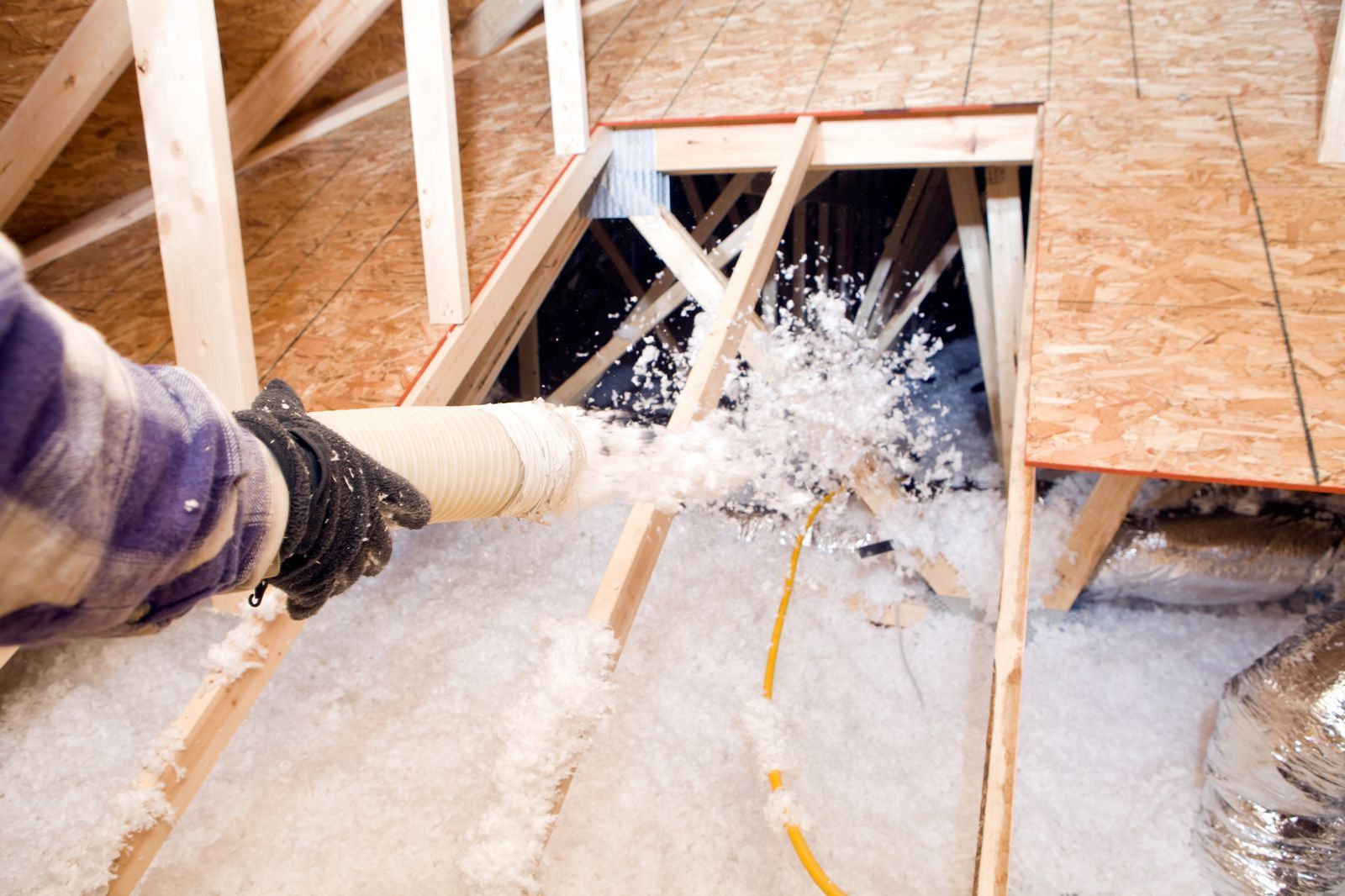Understanding Blown-In Insulation
Blown-in insulation is a popular choice for homeowners and businesses looking to improve energy efficiency. It consists of loose-fill materials, such as fiberglass or cellulose, that are applied using a specialized blower machine. This method allows for uniform coverage, filling in gaps and crevices where traditional insulation methods may fall short.
Proper insulation helps maintain indoor temperatures, reducing heating and cooling costs. Lincoln County’s climate, with cold winters and hot summers, makes insulation a crucial factor in energy conservation. Choosing the right type of blown-in insulation ensures long-term savings and increased comfort.
Types of Blown-In Insulation
Fiberglass Blown-In Insulation
Fiberglass insulation is made from fine glass fibers and is commonly used in both residential and commercial buildings. It offers several benefits:
- Thermal Efficiency: Provides solid insulation against heat loss and gain.
- Non-Combustible: Reduces fire risks compared to some alternatives.
- Moisture Resistance: Prevents mold growth, making it ideal for humid areas.
Cellulose Blown-In Insulation
Made from recycled paper materials, cellulose insulation is an eco-friendly option. Key features include:
- High R-Value: Offers excellent thermal resistance, helping maintain consistent indoor temperatures.
- Sustainability: Composed of up to 85% recycled materials.
- Treated for Fire Resistance: Chemically treated to meet safety standards.
Rock Wool Blown-In Insulation
Rock wool, or mineral wool, is made from molten rock spun into fibers. Benefits include:
- Superior Soundproofing: Effective at reducing noise transmission.
- Fire Resistance: Withstands high temperatures without combusting.
- Water Resistance: Repels water, preventing mold and mildew growth.
Choosing the Best Insulation for Lincoln County, ID
Climate Considerations
Lincoln County experiences a range of temperatures throughout the year. Effective insulation must combat heat loss in winter and prevent overheating in summer. Fiberglass and cellulose both perform well in this environment, but cellulose’s higher density makes it more effective in extreme cold.
R-Value Requirements
R-value measures an insulation material’s resistance to heat flow. Higher R-values mean better insulation performance. Recommended R-values for Lincoln County include:
- Attic: R-49 to R-60
- Walls: R-13 to R-21
- Floors: R-25 to R-30
Cellulose generally has a higher R-value per inch compared to fiberglass, making it a preferred choice for colder regions.
Cost and Installation Factors
The cost of blown-in insulation depends on material type and application area. While fiberglass is typically less expensive, cellulose provides higher energy savings over time due to its better thermal performance.
Installation is quick and efficient when handled by professionals. Valley Spray Works offers expert insulation services tailored to Lincoln County’s needs. Contact us at (208) 490-9260 or email [email protected] for an estimate.
Benefits of Blown-In Insulation
Energy Savings
Proper insulation reduces the need for excessive heating and cooling, lowering utility bills by up to 30%. The ability of blown-in insulation to fill gaps ensures consistent indoor temperatures.
Noise Reduction
Fiberglass and rock wool insulation are particularly effective at minimizing sound transmission. This is beneficial for homes near busy roads or in multi-unit buildings.
Eco-Friendliness
Cellulose insulation is made from recycled materials, making it a sustainable choice. It also requires less energy to produce compared to fiberglass.
Longevity and Maintenance
Blown-in insulation has a long lifespan, often lasting over 20 years. Routine inspections can help ensure it remains effective, especially in older homes where settling may occur.
When to Upgrade or Replace Insulation
If your home experiences high energy bills, temperature fluctuations, or drafty areas, it may be time to upgrade insulation. Additional signs include:
- Ice dams forming on the roof in winter.
- Increased noise levels inside the house.
- Visible moisture or mold growth in attic spaces.
Upgrading to higher-performance blown-in insulation can resolve these issues, improving comfort and efficiency.
For expert guidance on blown-in insulation, reach out to Valley Spray Works at (208) 490-9260 or email [email protected].
Frequently Asked Questions
1. How long does blown-in insulation last?
Blown-in insulation can last 20–30 years with proper installation and minimal disturbance.
2. Is blown-in insulation better than batt insulation?
Blown-in insulation fills gaps more effectively, providing better coverage and reducing air leaks compared to traditional batt insulation.
3. Can blown-in insulation be added over existing insulation?
Yes, new blown-in insulation can be applied over existing material to enhance performance, provided the older insulation is in good condition.
4. How much does blown-in insulation cost?
Costs vary based on material and application area. On average, prices range from $1 to $3 per square foot.
5. Is cellulose insulation safe?
Yes, cellulose insulation is treated with fire-retardant chemicals and meets safety regulations.
6. Will blown-in insulation settle over time?
Some settling can occur, particularly with cellulose insulation. Proper installation minimizes this effect.
7. Can I install blown-in insulation myself?
While DIY installation is possible, professional installation ensures even coverage and optimal performance.
8. Does blown-in insulation help with soundproofing?
Yes, rock wool and fiberglass provide excellent sound absorption.
9. How does blown-in insulation affect indoor air quality?
Blown-in insulation does not release harmful fumes and helps improve air quality by reducing drafts and temperature fluctuations.
10. What is the best type of blown-in insulation for Lincoln County?
Cellulose is often preferred due to its higher R-value and better thermal performance in colder climates.



